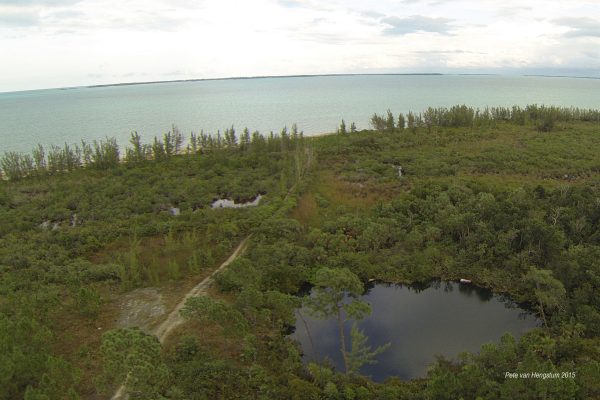Dr. Fall Article in PNAS

A recent article appearing in the Proceedings of the National Academy of Sciences features Department of Geography & Earth Sciences Professor Pat Fall, whose research reveals that humans first arrived in the northern Bahamas about 830 CE, 200 years earlier than thought previously, after spreading rapidly through the entire Bahamian archipelago in less than century. Dr. Fall collaborated with oceanographers, climatologists and geoscientists in the US and the Bahamas to integrate evidence of vegetation change and hurricane disturbances to explain major ecological shifts on the island of Abaco between 5000 years ago and the present. As the central contribution to this study, Dr. Fall analyzed a fine-grained sequence of pollen samples from a 3-meter-long sediment core taken using advanced SCUBA techniques from the bottom of Blackwood Sinkhole on the island of Abaco. Bahamian sinkholes (also known as blueholes) are caused by the dissolution of limestone, and when filled with water they provide excellent preservation of pollen-bearing sediments, as well as the remains of extinct animals.
At Blackwood Sinkhole, human arrival is signaled by a dramatic spike in charcoal, which AMS radiocarbon dates to 830 CE and indicates the arrival of the Lucayans, the first inhabitants of the Bahamas. Based on her previous palynological work on islands in Polynesia, as well as The Bahamas, Dr. Fall has documented how the arrival of humans on islands around the world is often marked by intentional burning of native vegetation to create landscapes more conducive to agriculture involving plants and animals that early voyagers carried with them. Pollen-based analysis of vegetation changes, linked with sedimentary evidence of hurricane landfalls at Blackwood Sinkhole, shows that human arrival in the Bahamas initiated rapid and pronounced ecological shifts from pre-human hurricane-resilient hardwoods and palms to pyrogenic and less-resilient pine and mangrove vegetation. Intervals of pronounced hurricane activity (e.g., in the 16 century) suggest that predicted increases in hurricane activity may again imperil Bahamian pine forests in the near future.
The study was funded by the National Science Foundation.